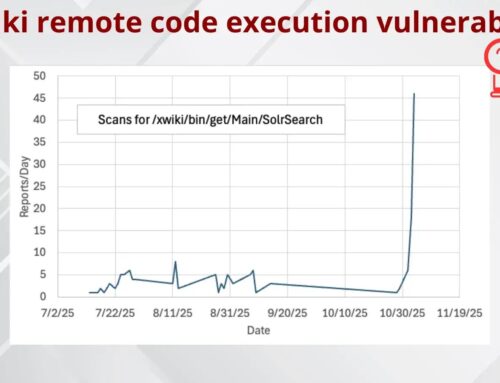
Beware of Website Mimicking Google Play Store Pages to Deliver Android Malware
The digital landscape is a battleground where cybercriminals constantly evolve their tactics to compromise unsuspecting users. A particularly insidious and effective method involves mimicking trusted platforms to deliver malware. Recently, a sophisticated Android malware campaign has resurfaced, employing perfectly replicated Google Play Store pages to distribute the dangerous SpyNote Remote Access Trojan (RAT).
This campaign represents a significant threat to mobile device security, as it leverages the inherent trust users place in official application stores. Understanding the mechanics of this attack and implementing robust security practices are paramount for safeguarding personal data and device integrity.
Understanding the Deceptive Tactics
The core of this Android malware campaign lies in its unparalleled ability to create highly convincing imitations of legitimate Google Play Store application pages. Cybercriminals are meticulously crafting static HTML clones of popular Android application install pages, going beyond superficial resemblance to include copied CSS styling and even JavaScript functionality designed to enhance the illusion.
When a user accustomed to the Google Play Store interface encounters one of these deceptive pages, the visual cues – layout, fonts, imagery, and even loading animations – are almost indistinguishable from the genuine article. This level of detail significantly lowers a user’s guard, making them more susceptible to downloading the malicious payload. The attackers often use social engineering techniques, such as phishing emails or malicious links on compromised websites, to direct users to these fake pages.
The Threat: SpyNote Remote Access Trojan (RAT)
The primary payload delivered by this campaign is the notorious SpyNote Remote Access Trojan (RAT). SpyNote is a highly intrusive piece of malware, granting attackers extensive control over an infected Android device. Its capabilities are broad and deeply concerning:
- Data Exfiltration: SpyNote can steal a wide array of sensitive information, including contacts, SMS messages, call logs, photos, and even payment card details stored on the device.
- Remote Control: Attackers can remotely control the device, including installing or uninstalling applications, making calls, sending messages, and even recording audio through the device’s microphone.
- Keylogging: The RAT can log keystrokes, capturing usernames, passwords, and other confidential input.
- Surveillance: SpyNote can record videos via the device’s camera and track GPS location, effectively turning the user’s smartphone into a powerful surveillance tool.
- Bypassing Security: More advanced versions of SpyNote have demonstrated capabilities to bypass two-factor authentication (2FA) mechanisms, further compromising user accounts.
While a specific CVE number for this campaign’s latest iteration or the SpyNote RAT itself isn’t generically assigned (as malware campaigns evolve and RATs are tools rather than single vulnerabilities), the underlying vulnerabilities exploited often involve user trust and lack of robust security practices. Attackers constantly adapt their methods, making it crucial to stay informed about the latest threats.
Detection and Prevention Strategies
Preventing infection by campaigns like this requires a multi-layered approach, combining user awareness with technical safeguards:
- Verify Sources: Always download applications directly from the official Google Play Store. Be extremely wary of links to app downloads from unofficial sources, emails, or pop-up ads, even if they appear legitimate. Manually navigating to the Google Play Store and searching for the app is the safest method.
- Check URLs Carefully: Before interacting with any download link, meticulously examine the URL in your browser’s address bar. Look for small discrepancies, misspellings, or unusual domain names. Genuine Google Play Store URLs typically start with
play.google.com. - Review App Permissions: Before installing any application, carefully review the permissions it requests. A simple flashlight app requesting access to your contacts, microphone, or camera is a red flag.
- Keep Software Updated: Regularly update your Android operating system and all installed applications. These updates often include critical security patches that close vulnerabilities exploited by malware.
- Use Reputable Antivirus Software: Install and maintain a reputable mobile antivirus or anti-malware solution on your Android device. These tools can often detect and block known malware, including RATs like SpyNote.
- Enable Google Play Protect: Ensure Google Play Protect is enabled on your device. It scans apps for malicious behavior and can alert you to potential threats.
- Exercise Caution with Wi-Fi: Avoid downloading applications or performing sensitive transactions over unsecured public Wi-Fi networks, which are highly susceptible to man-in-the-middle attacks.
Remediation Actions
If you suspect your Android device has been compromised by SpyNote or similar malware, immediate action is critical:
- Disconnect from Networks: Immediately disable Wi-Fi and mobile data to prevent the malware from communicating with its command-and-control server and exfiltrating more data.
- Identify and Uninstall Malicious Apps: Go to your device’s “Settings” -> “Apps” or “Applications” and look for any recently installed or suspicious applications, especially those that you don’t recall installing. Uninstall them. Be aware that some sophisticated malware might try to hide or prevent uninstallation.
- Run Security Scans: Use a trusted mobile antivirus application to perform a full scan of your device. Follow its recommendations for quarantining or removing detected threats.
- Change Passwords: From an uncompromised device, immediately change passwords for all critical online accounts, including email, banking, social media, and cloud storage. Assume any password stored on or used by the infected device is compromised.
- Backup and Factory Reset: If you cannot confidently remove the malware, or if you suspect deep compromise, the most drastic but effective step is to perform a factory reset of your device. Ensure you back up important data BEFORE resetting, but be cautious not to back up malicious files. A full factory reset will wipe all data and software, returning the device to its original state.
- Report the Incident: Consider reporting the incident to relevant cybersecurity authorities or your IT security department if it’s a corporate device.
Security Tools for Android Protection
Leveraging appropriate tools can significantly enhance your Android device’s security posture:
| Tool Name | Purpose | Link |
|---|---|---|
| Google Play Protect | Built-in Android security for app scanning. | N/A (Built-in) |
| Malwarebytes for Android | Detects and removes malware, including RATs and adware. | https://www.malwarebytes.com/android |
| Avast Mobile Security | Antivirus, anti-theft, and privacy protection. | https://www.avast.com/android-antivirus |
| Kaspersky Internet Security for Android | Comprehensive mobile security with anti-phishing. | https://www.kaspersky.com/android-security |
| URL Scan | Online tool to analyze suspicious URLs for malicious content. | https://urlscan.io/ |
Conclusion
The prevalence of sophisticated Android malware campaigns, particularly those leveraging highly deceptive Google Play Store mimics, underscores the constant need for vigilance in today’s interconnected world. Cybercriminals will continue to exploit trust and familiarity to compromise devices and data. By understanding their tactics, adopting rigorous security practices, and promptly responding to potential threats, users can significantly reduce their risk of falling victim to such attacks. User awareness remains the strongest defense against social engineering tactics employed in these campaigns.





